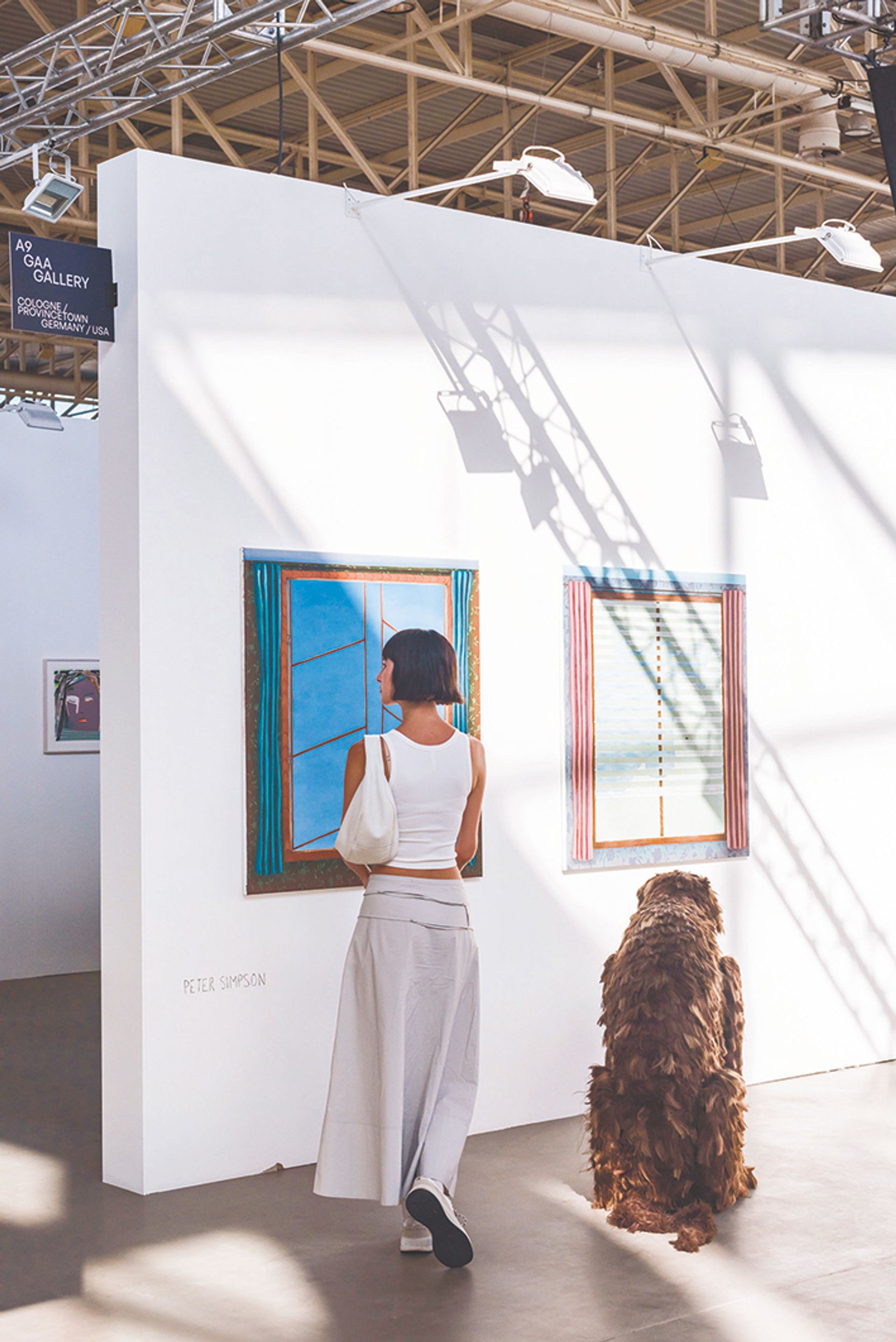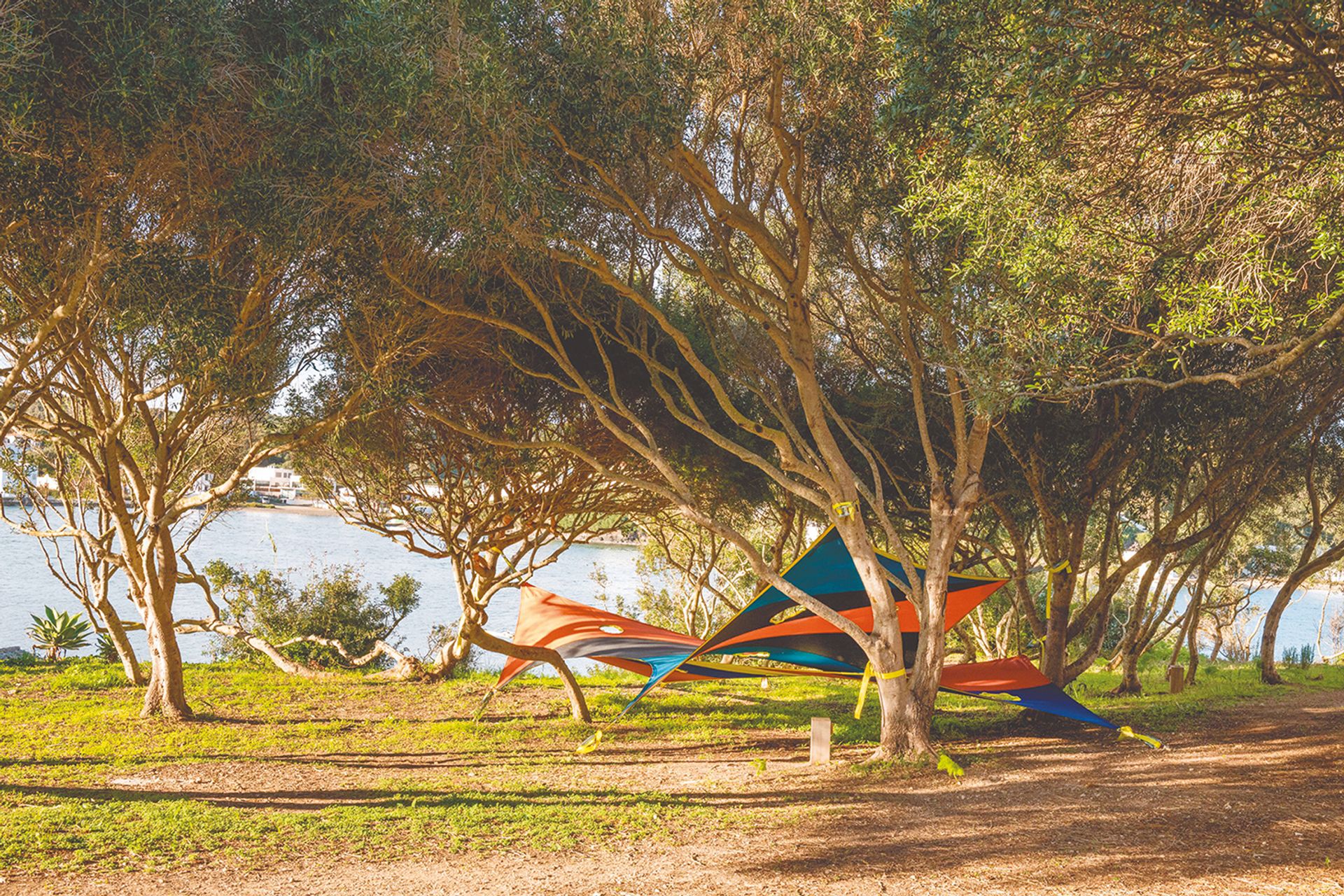Home to a Swiss mega-gallery and nestled in the sparkling waters of the Mediterranean Sea, the Balearic Islands form an archipelago of five islands of enchanting beauty with a rich cultural heritage. While Ibiza is synonymous with vibrant nightlife and music festivals, neighboring Mallorca and Menorca also have a diverse historical heritage and thriving art scenes.
In 2021, Hauser & Wirth opened an outpost in Menorca, an island with a population of only 96,000 but an annual tourism turnover of 1.4 million people. Housed in a repurposed 18th-century naval hospital, Hauser’s 1,500m² art center is not so much a white cube as an art oasis. The space pays homage to the quintessence of the spirit of the Balearic Islands: gastronomic activities nestled in a kind of hippie relaxation. The gallery space is surrounded by a series of lush gardens designed by Piet Oudolf.
cultural haven
Yet before the mega-gallery moved to Menorca, the Balearic Islands had long been a haven for cultural travelers of all shapes and stripes. In 1932, then-wandering cultural theorist Walter Benjamin took a ferry from Barcelona to Ibiza, where he wrote several postcards describing the quaint villages and uniquely inspiring cultural life he found on the island.

CAN Art Ibiza, which launched in 2022, aims to provide a platform for emerging galleries, as well as rekindling the island’s artistic heritage
© Maria Santos photography
Ibiza is arguably the most famous of the islands, and a new art fair, launched last year, is trying to recapture some of the Benjamin spirit. CAN Art Ibiza – which this year will host 34 galleries from four continents and run from July 12-16 – was conceived by director Sergio Sancho as a way to rekindle the island’s fascination with drift art.
CAN Art Ibiza is unique in the way it connects collectors with the island’s multifaceted offerings, combining art and social gatherings to provide a more laid-back experience than mega-fairs like Art Basel or ARCO. Last year, the fair held a party at an organic wine farm with fashion brand Gucci, in addition to several other off-site and parallel programs that speak to the unique essence of the island.
“What I like about Ibiza is freedom and non-judgment”
According to Sancho, the aim of this edition is to serve as a platform for emerging galleries and to foster dialogue with the wide range of cultural life in and around the Balearic Islands. “As a passionate advocate of art and cultural exchange, Ibiza has always been a destination where art flourishes,” he says.
Off-site, CAN has organized exhibitions including one at the Faro de ses Coves Blanques, located inside an old lighthouse overlooking the bay of Sant Antoni, which will present works by Julià Panadès, Mallorcan artist represented by the Fran Reus gallery . At the Sa Punta des Molí Cultural Center, an exhibition by Ibizan artist Jesús de Miguel will also open at the same time as the fair. The La Nave Salinas Foundation, which last year hosted an extensive exhibition by artist Eva Beresin, will present this year a new series of works by Australian artist Jonny Niesche, represented at the fair by The Hole NYC gallery. , while the London-based Carl Kostyál gallery will return with an ephemeral exhibition, modern life painterscurated by Katharine Kostyal.

At Laia Estruch Kite 2 (2023) is part of Hauser & Wirth’s After the Mediterranean show in Menorca; the mega-gallery opened an outpost on the island in 2021
Courtesy of the artist and Hauser & Wirth; photo of Roberto Ruiz
In addition to this, the CAN organizes visits by collectors to MACE (Museum of Contemporary Art of Eivissa); Estudi Tur Costa, a cultural space located in the town of Jesús; and Casa Broner, the former residence and studio of German artist Edwin Broner, one of the island’s most recognized architectural destinations, a modernist masterpiece that evokes a mid-century approach to design. 20th century that would later infiltrate and proliferate throughout the Balearic Islands.
This summer will also see the opening of a new gallery, Can Garita, founded by former Perrotin collaborator Sarah Suco Torres. Housed in a traditional fishing hut known in the local dialect as a casas de pescadoresthe revamped beach gallery will open on July 15 with an exhibition by American artist Grason Ratowsky.
“What attracted me to the island was the architecture and the nature, but also the freedom. There is an energy and a tranquility that coexist,” says Torres. It plans to organize a rotating series of three to four exhibitions a year, in addition to supporting its artists through a partnership with a local residence, Las Cicadas Ibiza, located in a restored 500-year-old farmhouse that hosts groups of three. artists over four -weeks throughout the year.
Separate collector’s group
In addition to vibrant art spaces like these, the Balearic Islands have attracted a distinct group of collectors, including architect Guillaume Kervyn, whose grandmother bought a property in Majorca in the 1950s. Kervyn, who describes his childhood in Mallorca as a “paradise”, bought a property in Castillo in Ibiza; Part of a Unesco restoration project, it took him five years to restore. It’s “like being in a monastery,” he says. “It’s a haven.”
At the entrance to Kervyn’s house is a work by José María Cicilia, which he bought from ARCO and has agreed to loan next year to the Prado Museum in Madrid. Up the stairs is a piece by Aldo Chaparro, as well as a torso by Antoine Bourdelle, which Kervyn bought at auction in Paris, and for which he struggled to obtain an export license ( but eventually did). Nearby, Kervyn also recently purchased Casa Cardinal, a large property with a garden and swimming pool that he plans to turn into a social space for art. His vision is to create an environment that harmoniously combines the old world and its traditional charms with the new and international styles and tastes he has cultivated over his years of attending biennials and art fairs.
Bohemian
“What I love about Ibiza is the freedom and non-judgment,” says Kervyn. “There is always something a little bohemian; it’s more free than other places.
Throughout the ages, what seems to make Ibiza in particular such a unique and endearing cultural destination is its anti-snob attitude. The laid-back spirit can be felt everywhere and is markedly different from the vibe on islands like Mykonos or Capri, or nearby southern France or Monaco, where ostentatious displays of wealth can quickly overwhelm like too many of Tom Ford cologne sprays.
Refreshingly, it looks like Ibiza is changing. What remains is that people tend to value pride and preservation over novelty, keeping alive the memory of a place where bohemians like Benjamin, forever the epitome of nonconformity, wandering strolleronce wrote on the back of a postcard representing the view of Ciudad: “The wall crossed the landscape like a voice, like a hymn singing through the centuries of its duration.”
